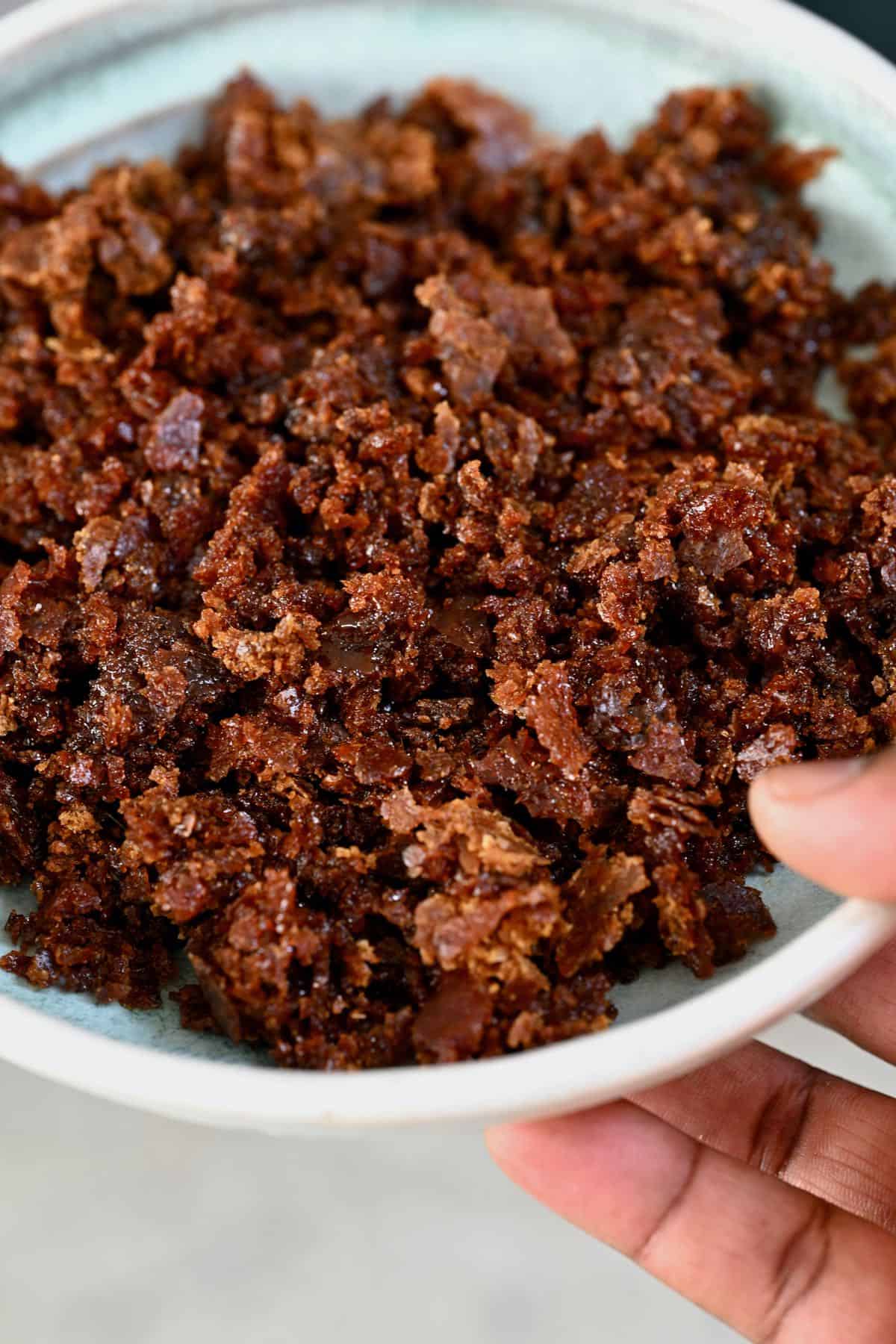An In-Depth Guide to the Environmental Impact and Sustainability Practices in Walking Stick Sugar Processing
The environmental influence of walking cane sugar handling presents an intricate selection of difficulties that warrant careful examination. From dirt degradation and excessive water use to the carbon footprint connected with growing and manufacturing, the repercussions of conventional techniques are significant. What specific techniques can be carried out to strike a balance in between productivity and ecological stewardship?
Summary of Cane Sugar Handling
Cane sugar handling involves a collection of methodical actions that transform sugarcane into polished sugar. At first, harvested sugarcane is transported to processing centers, where it undergoes cleansing to eliminate soil and debris. Following this, the walking stick is squashed to extract juice, which is then made clear by removing pollutants via heating and the enhancement of lime.
The clarified juice goes through dissipation, where water is removed to focus the sugar web content. This concentrated syrup is after that taken shape through air conditioning, allowing sugar crystals to create. These crystals are divided from the remaining syrup utilizing centrifugation, causing raw sugar. To achieve polished sugar, the raw item undergoes further purification procedures, which might include filtering system and cleaning to eliminate staying contaminations and color.
The end product is after that dried and packaged for distribution. Throughout this entire process, preserving performance and quality assurance is important to make certain the sugar fulfills industry standards. Each action in walking stick sugar processing not only adds to the last item however additionally has implications for source use and waste generation, setting the stage for discussions on sustainability and ecological impacts related to sugar production.
Ecological Challenges of Manufacturing
The manufacturing of walking stick sugar offers a number of significant ecological difficulties that warrant interest. One key worry is the extensive use of agrochemicals, including pesticides and fertilizers, which can cause dirt deterioration, biodiversity loss, and contamination of local water sources. The overflow from sugarcane areas usually carries these chemicals right into neighboring communities, interfering with marine life and influencing the wellness of areas reliant on these water bodies.
Another challenge is the high power consumption associated with sugarcane processing. The boiling and refining phases need substantial warmth, primarily produced by melting fossil gas, contributing to greenhouse gas exhausts. Additionally, the large acreage needed for sugarcane cultivation can bring about logging and environment damage, more worsening environment adjustment and threatening wild animals.
Furthermore, the labor practices in some areas raise honest issues, as workers might deal with poor working problems and insufficient salaries. This circumstance often perpetuates a cycle of poverty in local communities. Cane Sugar Processing. Attending to these ecological obstacles is critical for creating extra lasting techniques in cane sugar manufacturing, ultimately profiting both the setting and the communities included in this market
Water and Land Use Effect
Water sources and land use are crucial elements in the walking stick sugar sector that dramatically influence the setting. The farming of sugarcane requires substantial water input, with price quotes suggesting that it can eat as much as 2,000 litres of water per kg of sugar created. This extensive use water frequently results in deficiency of neighborhood water resources, impacting not only the sugarcane ranches but likewise bordering communities and neighborhoods that rely upon the same water resources for farming and domestic usage.

Additionally, land use for sugarcane farming can lead to deforestation and the conversion of natural environments into monoculture vineyards. This practice decreases biodiversity, disrupts regional ecosystems, and adds to soil destruction. The growth of sugarcane fields typically intrudes on valuable farming land, developing competition for resources in between food and biofuel production.
Sustainable practices, such as optimizing watering methods and carrying out crop rotation, are vital to reduce these influences. By taking on more effective water usage and land administration approaches, the walking cane sugar industry can decrease its ecological impact, making sure an equilibrium in between agricultural productivity and ecological preservation.
Greenhouse Gas Emissions
Greenhouse gas exhausts stand for a substantial ecological worry within the walking cane sugar handling navigate to this website sector, especially as farming practices increase to satisfy international need. The growing of sugarcane, a plant that grows in exotic environments, relies greatly on artificial fertilizers and pesticides, which add to laughing gas emissions. Additionally, land-use adjustments, including deforestation for brand-new sugarcane plantations, release carbon dioxide kept in plants and soil.
During processing, power usage is another significant source of greenhouse gas discharges - Cane Sugar Processing. Many sugar mills make use of nonrenewable fuel sources to power machinery and produce warmth, causing significant carbon footprints. In addition, the transportation of raw sugarcane and ended up items includes layers of emissions through fuel burning in cars
The advancing result of these exhausts intensifies climate modification, posturing threats not just to the atmosphere but additionally to the long-lasting feasibility of the market. Stakeholders should recognize the urgent requirement for comprehensive approaches that attend to these exhausts. This includes assessing existing farming methods, processing approaches, and transportation systems to determine locations for improvement and reduction. Addressing greenhouse gas emissions is important for promoting an extra lasting cane sugar sector in an altering climate.

Lasting Practices and Innovations
Sustainable methods and developments are increasingly important in the cane sugar handling sector as stakeholders seek to lower environmental influences while keeping efficiency. One substantial innovation is the application of integrated crop management, which enhances source usage by integrating dirt monitoring, pest control, and plant turning strategies. This technique boosts return while decreasing chemical inputs and maintaining soil wellness.
Additionally, the adoption of renewable resource sources, read here such as biomass from sugarcane residues, has actually gained traction - Cane Sugar Processing. By transforming waste products into energy, refining centers can decrease their reliance on fossil fuels, thus reducing greenhouse gas emissions
Water management methods have likewise seen improvements through the recycling and reusing of water in handling plants, significantly reducing freshwater usage. Advancements in technology, such as accuracy farming, enable farmers to check crop wellness and source usage much more efficiently, ensuring sustainable farming practices.
Additionally, certification programs like Fair Trade and Rainforest Partnership motivate environmentally liable farming practices and advertise social equity within the supply chain. By embracing these lasting practices and advancements, the cane sugar processing market can improve its strength and add positively to environmental stewardship.
Verdict
The environmental effect of walking stick sugar processing offers substantial difficulties, including soil degradation, high water intake, and greenhouse gas exhausts, together helpful hints with ethical worries associated with labor practices. Addressing these issues via sustainable methods, such as incorporated crop administration, sustainable power adoption, and water recycling, is necessary. By advertising socially fair and eco accountable approaches in sugar manufacturing, the industry can reduce its adverse effects, guaranteeing a more lasting future for both neighborhoods and communities associated with this field.
Walking cane sugar processing includes a series of systematic steps that change sugarcane into polished sugar. Each step in walking cane sugar processing not just contributes to the final product yet additionally has effects for resource use and waste generation, setting the stage for conversations on sustainability and ecological effects associated with sugar manufacturing.
Greenhouse gas discharges stand for a substantial environmental concern within the walking cane sugar handling industry, especially as agricultural techniques increase to satisfy global demand.Lasting techniques and advancements are progressively vital in the cane sugar handling sector as stakeholders seek to lower environmental influences while maintaining productivity.The environmental effect of cane sugar processing provides significant obstacles, consisting of soil degradation, high water consumption, and greenhouse gas discharges, together with ethical worries related to labor techniques.